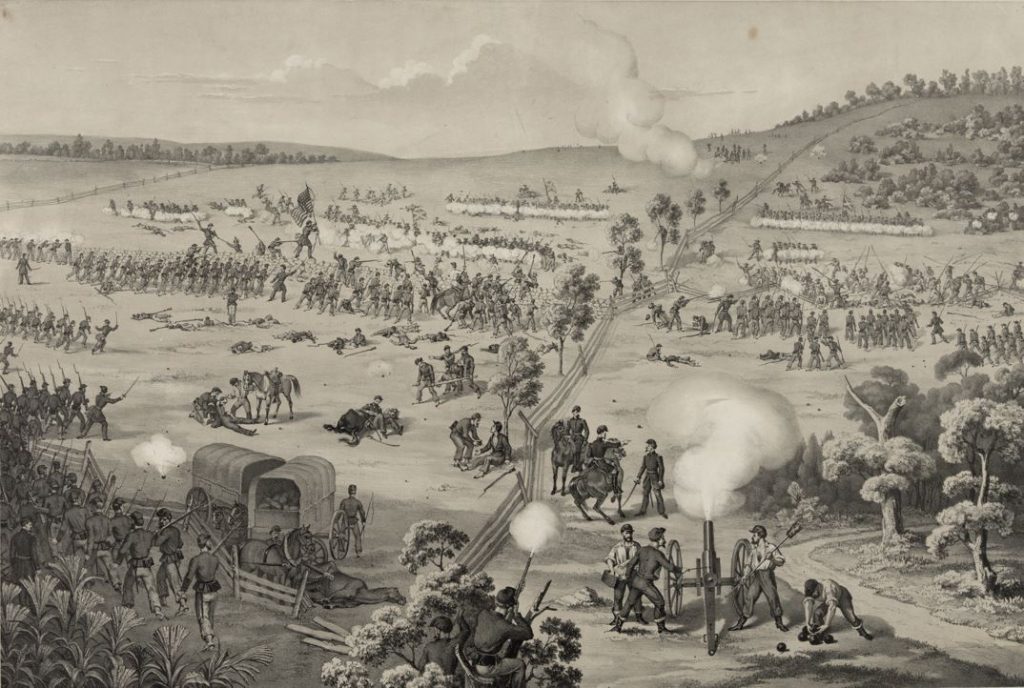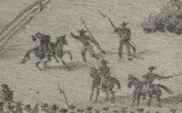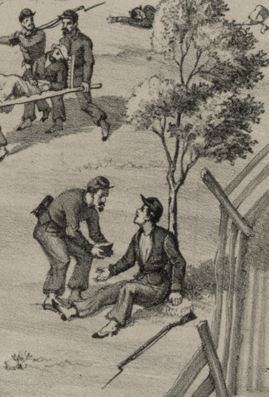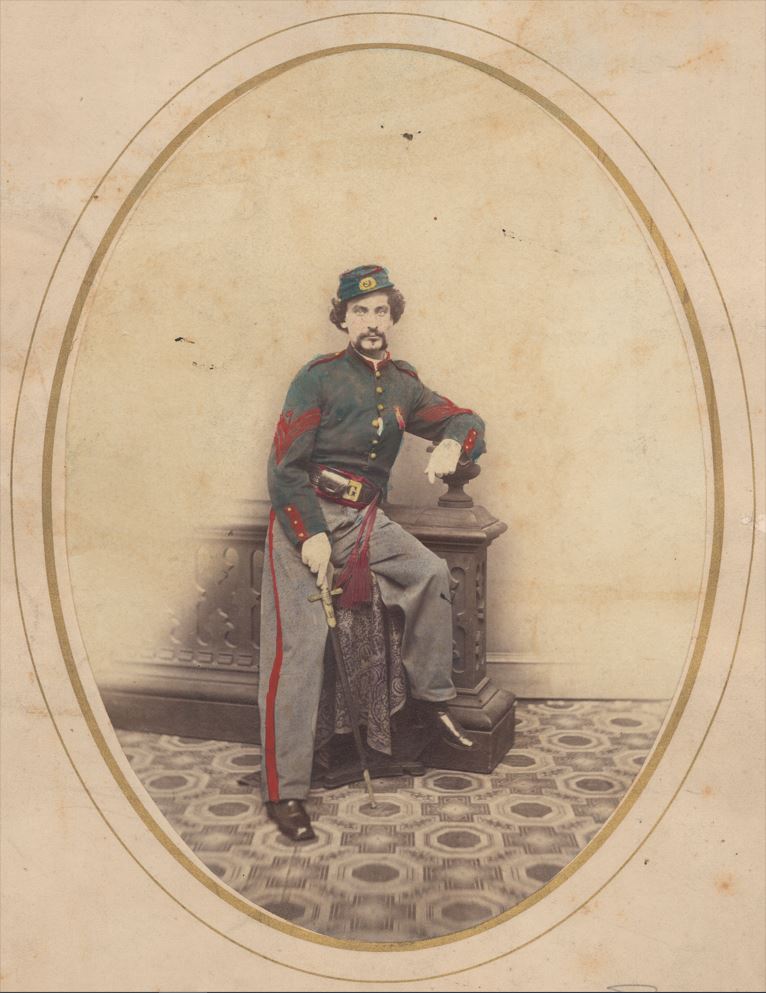Joseph Joel: Soldier-Artist of Fox’s Gap
Civil War battles are hard to make sense of. Orderly lines on a map and neat, clear depictions of battle make it hard to grasp the confusion of a smoke-clogged, loud, and deadly space fought over by two determined forces. The Battle of South Mountain, fought 160 years ago today on September 14, 1862, is especially one of those confusing, disordered fights.
“All order and regularity of the lines were soon destroyed,” recalled one Pennsylvanian as he and his comrades scaled the slopes of the mountain. He continued, “the battle partook of the nature of a free fight, every one going in ‘on his own hook,’ as it suited his fancy. From wall after wall, and rock after rock,” Federal troops slowly drove back the veterans of the Army of Northern Virginia.

The above 1864 print of the fighting at Fox’s Gap on the morning of September 14 is perhaps one of the most recognizable and reproduced depictions of the battle. It is not the most accurate version of the fight, either, but it was not until I took a closer look at the print while preparing Dan Welch’s and my Ohio at Antietam: The Buckeye State’s Sacrifice on America’s Bloodiest Day (History Press, 2021) that I gained a better appreciation of this piece of battle art.
Joseph Joel, a 20-year-old private in the 23rd Ohio Infantry, produced the print in 1864. Despite his young age, Joel had already experienced more than young men should in his short life. He was with his Buckeyes at Fox’s Gap and left the fight early due to a wound that was serious enough to force him out of the army early in 1863.
Shortly after his discharge, Joel set to work to make up for the lost army pay. His solution was the above print. In it, Joel weaved many aspects of the morning’s fight for Fox’s Gap into his artwork.
Joel prominently placed his regiment in the center of the print taking a position from Brig. Gen. Samuel Garland’s North Carolina brigade.

Despite the flag-waving Federals battling their enemy troops in tidy battle lines, Joel’s depiction of South Mountain did not ignore the horrors of battle. He included two prominent casualties in his artwork, showing Lt. Col. Rutherford B. Hayes of the 23rd Ohio being tended to after suffering a serious arm wound.
In the background, Joel sketched the fall of Brig. Gen. Samuel Garland, the only Confederate general to be killed or mortally wounded at South Mountain.

Lastly, Joel drew himself into the print. Propped against a tree after being struck by a Confederate bullet, Joel can be seen seeking help. Aid did find him on the battlefield, and he survived. Though discharged from the army because of this debilitating wound, Joel remained active in army veteran circles. He lived in New York City, printed the Grand Army Gazette, and kept up a correspondence with his friend, former commander, and President of the United States Rutherford B. Hayes. Joel lived out his days in the city and died in 1906.


I enjoyed the book on Ohio @ Antietam, including the preliminary chapters on the South Mountain fighting.